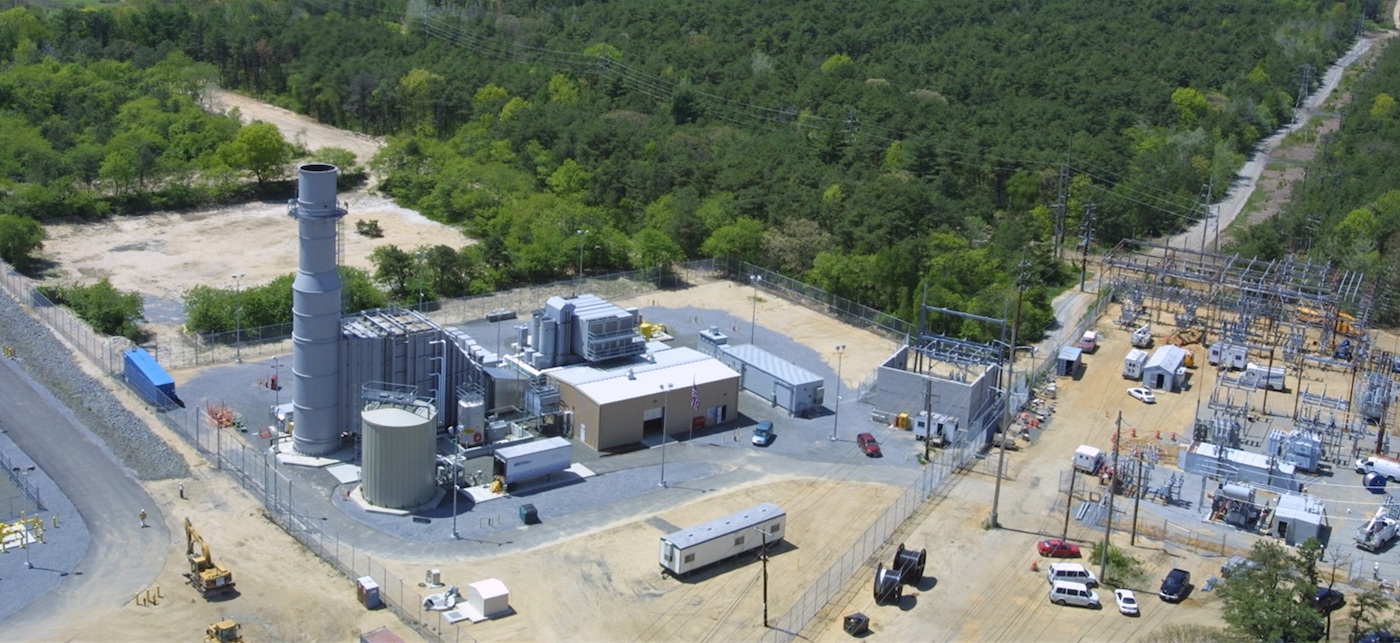In the summer of 2021, the New York Power Authority (NYPA) announced that it would be conducting a pilot project to temporarily replace natural gas with a green hydrogen/natural gas blend at its Brentwood Power Station on Long Island, to explore how varying percentages of hydrogen fuel would perform in the power station’s equipment and what the emissions impact would be. According to findings announced in late September, the results so far are very encouraging.
Using GE’s LM6000 aeroderivative gas turbine fueled by blends of 5% to 40% (by volume) hydrogen over several weeks this spring, the project showed a clear correlation between more hydrogen and lower CO2 emissions, where rates were reduced by approximately 14% at 35% by volume hydrogen cofiring. Nitrogen oxides, carbon monoxide, and ammonia levels were also kept below regulatory limits.
The test was part of a collaboration between NYPA, GE, the Electric Power Research Institute (EPRI), engineers Sargent and Lundy, hydrogen supplier Airgas, and Fresh Meadow Power.
“EPRI and [its] Low-Carbon Resources Initiative are accelerating deployment of a full portfolio of energy technologies to support a net-zero future,” said Neva Espinoza, EPRI’s vice president of energy supply and low-carbon resources. “As industry and government seek innovative energy solutions, NYPA’s hydrogen blending demonstration is uncovering new insights with implications well beyond New York.”
GE's aeroderivative gas turbines — i.e., turbines derived from a jet engine — are capable of running on blends of up to 85% hydrogen, while some configurations of the company’s HA class of gas turbines can run on up to 50% hydrogen. And just this week, the Department of Energy awarded $6.6 million to GE to test retrofitting GE’s F-class turbines to run on blends containing hydrogen. Overall, GE turbines have logged more than 8 million operating hours using blends of hydrogen by over 100 customers in 20 countries.
“As the most experienced gas turbine equipment manufacturer with hydrogen and similar low-BTU fuels, GE is proud to collaborate with NYPA, EPRI, and many others to deliver this important demonstration project,” said Eric Gray, president and CEO of GE Gas Power. “Efforts like the Green Hydrogen Demonstration Project are vital to validate the important role that hydrogen can play in lowering carbon emissions from power generation while also providing reliable and affordable power.”
While most hydrogen is made via steam methane reforming — in which natural gas (CH4) reacts with steam under pressure and heat to produce hydrogen, carbon monoxide (CO), and carbon monoxide (CO2) — green hydrogen is made through electrolysis. In this process, an electric current, derived from a renewable power source, splits water (H2O) into its constituent elements to produce oxygen (O2) and hydrogen (H2). By using renewable power that does not generate CO2 emissions and water that does not contain carbon, the green hydrogen process produces no CO2.
Hydrogen is beginning to take a prominent place in decarbonization plans by utilities across the U.S. and in other countries. This spring, the 485-megawatt Long Ridge Energy Terminal in Hannibal, Ohio, began a demonstration project generating electricity with a hydrogen-and-gas blend. The facility, operated by Long Ridge Energy, is using a massive 7HA.02 gas turbine made by GE to output enough power to light up the equivalent of 400,000 U.S. homes. Long Ridge provided lower-carbon power utilizing a blend of 5% hydrogen and natural gas and aims to transition the plant to be capable of burning 100% hydrogen in the future.
“Demonstration projects like Long Ridge and NYPA Brentwood illustrate the fact that gas turbines are already capable of operating on blends of hydrogen and natural gas, enabling a reduction in carbon emissions,” says Jeffrey Goldmeer, emergent technology director at GE Gas Power. “The NYPA project also highlights that gas turbines like the Brentwood LM6000 that operate as ‘peakers’ can simultaneously help to maintain a reliable electrical grid and provide electricity with lower carbon emissions.” Goldmeer says the emissions results from this demonstration are equally important: “The lower CO emissions while operating on a blend of hydrogen and natural gas might have longer-term benefits by improving gas turbine operational flexibility.”
NYPA’s Vision 2030 road map calls for low- to zero-carbon technologies to help the state achieve zero carbon emissions by 2035. New York State’s long-term decarbonization strategy aims to reach net zero emissions from electricity by 2040.
“Decarbonizing the power sector will require a collaborative, multi-pronged approach, including the use of new technologies and additional renewable power resources,” said Justin E. Driscoll, interim president and CEO of New York Power Authority. “Today, NYPA is pleased to share the results of our hydrogen study with the industry and the public so that our key learnings can help illuminate future decarbonization efforts.”
Top: Brentwood Power Station. Credit: New York Power Authority
